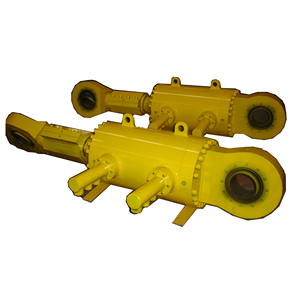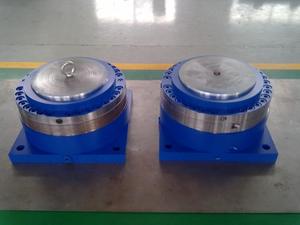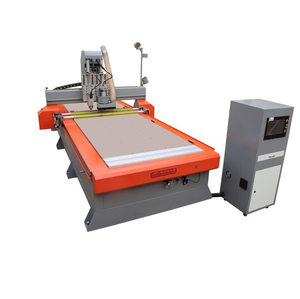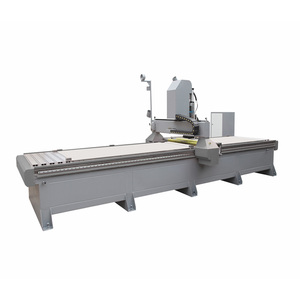
All categories
Featured selections
Trade Assurance
Buyer Central
Help Center
Get the app
Become a supplier

(42094 products available)


















The Loesche mill is an air-swept vertical roller mill with a three-stage separator. This type of mill is mainly used to produce cements and granulated blast-furnace slag cements. The mill can also be used for various materials like raw materials and carbon black. The dry material is fed from the top of the classifier, where a strong updraft carries it. Finer material falls into the collection cone, while more oversized particles are remade to the grinding chamber for further processing.
Loesche also produces vertical mills for different purposes, such as plastic mills. The Loesche RM 30 C vertical roller mill was explicitly developed for recycling and was the first of its kind in the world. The Loesche mill for plastics has a very stiff bearing system with no spring suspension. The bearing system allows it to grind hard plastics without any hassle. The Loesche mill for plastics can have a throughput of 20 up to 50 t/h, depending on the configuration of the sorting line and the input material.
Loesche also specializes in the raw material of vertical mills. The crucial step to obtain the best quality cement is to grind raw material before further processing. The RM 4 G (Raw Material 4 Giant) vertical roller mill from Loesche can handle raw material with a moisture content of more than 16% and has a capacity of up to 1,800 t/h. The high-performance milling machine of Loesche ensures that clients get excellent quality lime and cement. A vital element of cement is limestone, which has to be burnt in a lime kiln to make lime. Using the Loesche mill guarantees a high standard of raw material for clients' further use and processing.
Loesche not only produces vertical roller mills, but also centrally electric control systems, including Loesche Mill Control (LMC). This control system monitors and controls the motor's feeding, temperature, speed, and pressure of the mill, as well as its gas conditioning plant and settling chamber/harp. The control system is used to manage the specific energy in the mill—more energy-saving methods for users of Loesche control systems. Other central electric control systems include the plant control system (PCS) and the integrated control system (ICS). The Plant Control System is a modular system that complies with the laws on safety and risk assessment. The Loesche integrated control system combines all automation and control functions for the entire cement plant.
Using appropriate application scenarios of Loesche vertical tech;
The primary use of the Loesche vertical mill is the pulverizing of coal, limestone, cement clinker, and other materials. This is crucial in the industries of construction, cement, and power generation. Nevertheless, these mills' typical use application is constantly changing as technological advancement and industrial expansion.
Loesche vertical mills have numerous uses aside from merely grinding coal and cement. They are employed to produce fillers and fine minerals for use in the paint, rubber, and plastics sectors. These vertical mills stand out because they can mill products down to tiny particle sizes of less than 20 microns. Such refined milling is practically unachievable with the traditional ball mills.
Modern Loesche vertical mills include sorting gadgets that can separate coarse materials from finely ground ones. The former are further milled until they attain the necessary fineness, which minimizes the amount of re-milling. This not only accelerates the production process but also optimizes energy use, resulting in a more environmentally friendly manufacturing procedure.
In addition to their grinding capability, Loesche vertical mills can also dry materials with a moisture content of up to 20%. This is made possible by the hot gases introduced into the milling chamber, which can either come from the production process or be sourced externally from a hot gas generator.
Loesche vertical mills are further categorized by their capacities for processing raw materials into various product lines as follows:
Up to five different types of minerals can be milled with the help of a Loesche vertical mill, including calcium carbonate, dolomite, talcum, barite, and other industrial minerals. The chemical composition of limestone, for instance, is remarkably similar to that of cement. Thus, the two can be ground together, conserving resources when both occur in proximity to a manufacturing facility.
Focus on Demand:
Examining business needs is the first step in selecting a vertical mill for the business. Consider factors like production capacity, the material being dealt with, and the desired product quality. If a company's primary goal is to increase cement production, it should consider investing in a mill with a higher capacity and efficiency. Furthermore, it should have features that optimize energy utilization and reduce operating costs.
Future-Proof Investment:
When deciding which vertical cement mill to choose, it is essential to consider the potential for future upgrading and expansion. Select a supplier that offers a maintenance plan along with a cement mill machine so that any equipment and performance enhancements required later can be met. Ensure that the machine has adequate data connectivity to allow for real-time performance monitoring and analysis.
Integration with Existing Systems:
A crucial feature of the selected milling equipment will be its ability to integrate seamlessly with existing production lines and automation systems. Doing this helps facilitate a smooth installation process and enables efficient operations and easy management. The supplier will be tasked with installing a complete milling solution and offering a comprehensive maintenance service to ensure the machine functions reliably and is well cared for throughout its life span.
Q1: How many Loesche mills are there worldwide?
A1: Loesche has over 2,000 mills installed worldwide in various industries, mainly cement.
Q2: What is the development of Loesche mills?
A2: The first one began to make more than 100 years: the LM 53.3+3 C/S cement mill, with a capacity of 200 t/h, the LM 33.3+3 C/S cement mill, with a capacity of 175 t/h, and the LM 46.2+2 C/S cement mill, with a capacity of 150 t/h; the LM 42.4 C/S cement mill, with a capacity of 130 t/h; the LM 37.4 C/S cement mill, with a capacity of 100 t/h, etc.
Q3: Why are Loesche mills so successful?
A3: Loesche mills are successful because they provide high-precision equipment, innovative technology, low energy consumption, and sustainable development.
Q4: Are Loesche mills difficult to operate and maintain?
A4: One of the advantages of Loesche mills is that they are simple to operate and maintain.